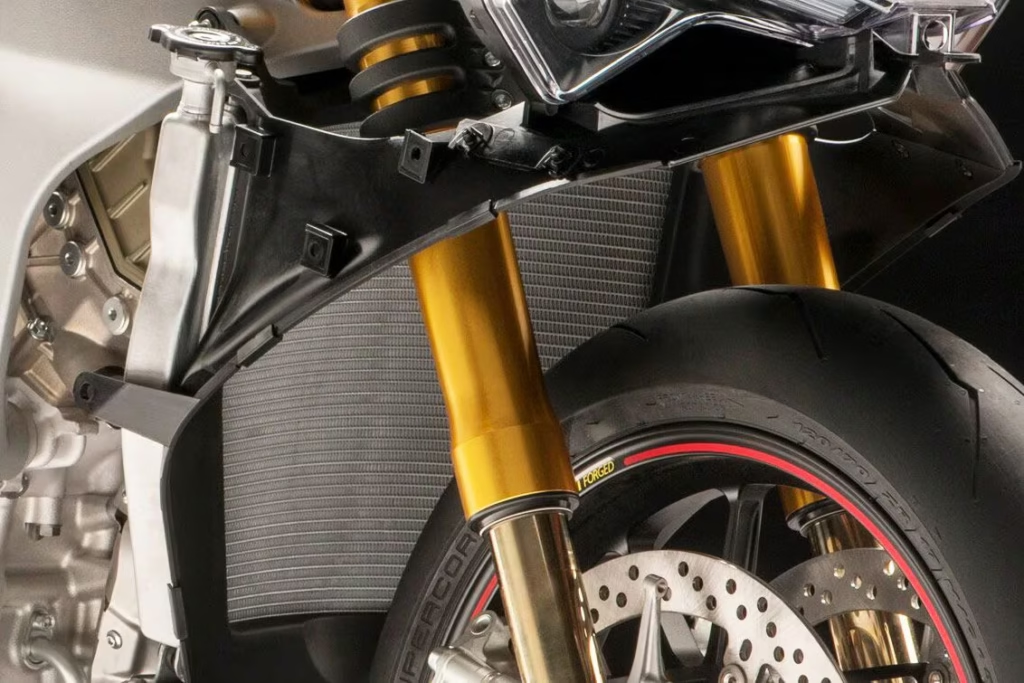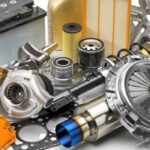When it comes to keeping your motorcycle running at peak performance, few components are as vital and often overlooked as the radiator. This essential piece of machinery ensures your engine doesn’t overheat, especially during long summer rides or after periods of winter storage. Regular maintenance is key, and seasonal checks help prevent long-term damage. Here is your comprehensive seasonal maintenance checklist for your motorcycle radiator, including expert tips on how to clean a motorcycle radiator safely and effectively.
Spring: Pre-Ride Readiness
- Visual Inspection
- Look for any signs of physical damage, such as dents, cracks, or corrosion on the radiator fins and housing.
- Ensure the radiator is properly mounted and that there are no loose bolts or brackets.
- Coolant Check and Replacement
- Drain old coolant if it has been sitting over the winter. Stale coolant can be corrosive and less effective.
- Refill with manufacturer-recommended coolant, ensuring the mixture ratio is appropriate (usually 50/50 water and coolant).
- Check hoses for signs of aging, brittleness, or leaks. Replace any that show wear.
- Pressure Test
- Use a radiator pressure tester to ensure the system maintains proper pressure.
- A drop in pressure could indicate a leak or a failing cap.
- Cleaning the Radiator
- Remove any debris, bugs, or grime from the fins with compressed air or a soft brush.
- This is a good time to perform a thorough cleaning, especially if you’re wondering how to clean a motorcycle radiator properly. (More on this below.)
Summer: In-Ride Monitoring
- Monitor Temperature Gauges
- Keep an eye on your temperature gauge while riding, especially during long trips or in high temperatures.
- Unusual spikes could be a sign of a clogged or malfunctioning radiator.
- Fan Operation Check
- Ensure the radiator fan kicks in at the appropriate temperature.
- Test manually by running the bike at idle and monitoring for fan engagement.
- Inspect for Leaks
- Hot weather can exacerbate small leaks. Check under your bike for coolant drips.
- Examine hose clamps and connections.
- Bug and Debris Removal
- Clean your radiator fins frequently to prevent airflow restriction. Debris accumulation reduces efficiency.
Fall: Post-Ride Cleanup and Inspection
- Coolant Flush
- Consider performing a coolant flush if you rode extensively during summer. This prevents deposit buildup.
- Use a radiator flush solution for deep cleaning.
- Inspect Radiator Cap
- A worn-out cap can lead to pressure loss and overheating. Replace if the rubber gasket looks degraded.
- Fins Straightening
- Use a fin comb to straighten any bent fins. Damaged fins can reduce cooling capacity.
- Deep Cleaning
- This is another great time to address how to clean a motorcycle radiator. Follow the detailed guide below.
Winter: Storage Prep
- Coolant Level and Quality Check
- Ensure the coolant is topped off and in good condition. This prevents freezing and internal corrosion.
- Anti-Freeze Strength Test
- Use a hydrometer to test the antifreeze strength. Replace coolant if it’s not winter-grade.
- Cover and Protect
- Use a breathable motorcycle cover that allows moisture to escape while preventing debris from collecting in the radiator.
- Monthly Idle Checks
- Start the bike once a month and let it reach operating temperature. This keeps coolant circulating and seals lubricated.
How to Clean a Motorcycle Radiator: Step-by-Step Guide
Proper radiator cleaning not only extends the lifespan of the cooling system but also improves overall engine performance. Here’s how to clean a motorcycle radiator safely:
- Allow the Engine to Cool
- Never attempt to clean a hot radiator. Wait until the engine is completely cool.
- Remove Protective Covers or Fairings
- Gain full access to the radiator. Use appropriate tools and keep track of screws.
- Exterior Cleaning
- Use compressed air or a soft brush to remove loose dirt and bugs.
- Avoid using high-pressure water as it can bend the fins.
- Degreasing
- Spray a motorcycle-safe degreaser or radiator cleaner over the fins.
- Let it sit for a few minutes, then gently rinse with low-pressure water.
- Internal Flush (Optional)
- Drain the old coolant completely.
- Fill the system with a radiator flush solution and distilled water.
- Run the engine briefly to circulate the solution.
- Drain again and refill with new coolant.
- Dry and Inspect
- Let the radiator air dry or gently pat with a microfiber cloth.
- Recheck for any signs of corrosion or damage.
Common Radiator Issues to Watch For
- Overheating
- Usually caused by blocked airflow, low coolant, or a faulty fan.
- Coolant Discoloration
- Brown or sludgy coolant can indicate rust or oil contamination.
- Unusual Noises
- Gurgling or bubbling may signal trapped air in the system or pump issues.
- Foul Smells
- A sweet smell might indicate a coolant leak.
Final Thoughts
Your motorcycle’s radiator plays a crucial role in maintaining engine health and performance. Neglecting its upkeep can lead to overheating, breakdowns, and costly repairs. By following this seasonal maintenance checklist and learning how to clean a motorcycle radiator properly, you can ride confidently year-round, knowing your cooling system is in top condition. Always consult your motorcycle’s manual for model-specific recommendations, and when in doubt, seek professional servicing.






